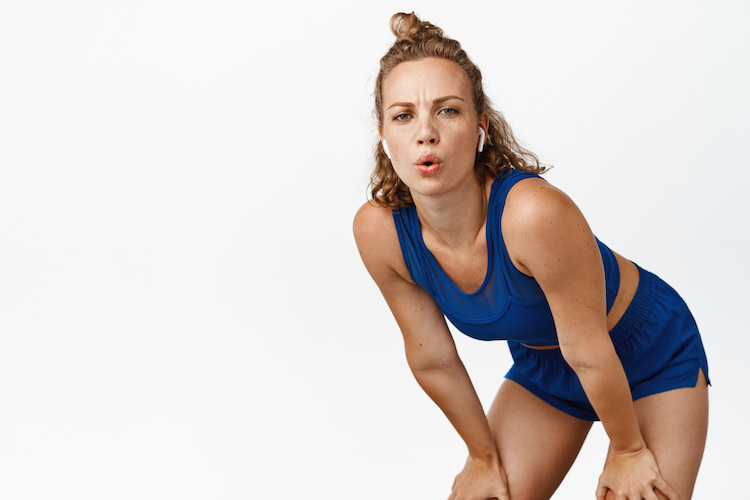Top 5 Things to Know About Workout After Botox

Among all aesthetic procedures, Botox treatment occupies a special place. Its safety, effectiveness, and long-lasting result are strongly appreciated by healthcare providers and their patients worldwide. Still, you have to be aware of several after-treatment recommendations before undergoing Botox injections.
In this article, you will be able to check out the peculiarities of exercising after Botox. How soon after the procedure can you workout? When not to exercise after Botox? What physical activities to avoid after the procedure? And vice versa, what physical activities are safe after undergoing a Botox injection? Last but not least, what complications might occur after the treatment?
Go through the information below to find the answers to all these questions. Let us delve into the world of Botox together!
If you are currently looking for a reliable place to order Botox online, check out what FillerSupplies offers. Here, you will find a wide range of brand-name botulinum toxins and dermal fillers for an affordable price.
What Is Botox Treatment?
Botox treatment is a minimally invasive injectable procedure that assumes the administration of botulinum toxin (type A) beneath a patient’s skin with the help of a fine gauge needle. As a procedure intended for professional use, it should be performed exclusively by a certified healthcare provider with a valid medical license.
It is also worth mentioning that there exist medical and cosmetic Botox treatments. Medical treatments help a patient take care of a wide range of health problems associated with muscle contraction. Cosmetic treatments that involve Botox, in turn, do a great job when it comes to the improvement of aesthetic imperfections caused by overactive muscle movements.
Among the main problems medical Botox treatments might address are excessive sweating, chronic migraine, overactive bladder, lazy eye, neck pain, and so on. The main issues cosmetic Botox treatments might cope with, in turn, are dynamic facial wrinkles, drooping eyebrows, thin upper lip, facial asymmetry, gummy smile, and so on (which is why it works as an effective anti-aging treatment).
The working principle of Botox treatment is based on the ability of botulinum toxin (type A) to function as a muscle relaxant by causing a temporary paralysis of nerve signals attached to muscles around the injection site. On average, Botox results last about six months. However, their exact duration strongly depends on the individual peculiarities of each patient (including his or her overall health condition).
Last but not least, it is also worth mentioning that Botox is probably the most well-known brand of botulinum toxins used in plastic surgery, dermatology, and cosmetology these days. Manufactured by a global pharmaceutical corporation Allergan, it is exceptionally popular among healthcare providers and their patients worldwide.
Other famous brands of botulinum toxins available on the market these days are Bocouture, Dysport, Xeomin, and so on. Despite their similar compositions, they all have their individual properties. Thus, it is a task of a healthcare provider to define which botulinum toxin product is going to fit a patient’s needs to the greatest extent.
What Should You Know About Workout After Botox?
In most cases, a patient does not need to follow numerous after-treatment recovery rules after undergoing Botox injections. At the same time, however, there exist several things you should know about doing body and facial exercises after the procedure. Below, you will be able to check out the list of them.
#1. How Long After Botox Can You Workout?
According to the vast majority of plastic surgeons, dermatologists, and cosmetologists, a patient should wait at least 24 hours before doing any kind of body and facial exercises after Botox injections. The main reason for this is that the process of working out usually leads to increased blood flow and blood pressure, which might slow down the healing process after the administration of Botox.
It is also worth mentioning that a patient should keep avoiding strenuous exercise for even longer after Botox. The avoidance of mild exercise for 24 hours after Botox might not be enough when it comes to vigorous exercise (such as hot yoga or strength training). In other words, workouts during which a patient keeps wiping sweat from his or her forehead should be avoided for at least 48 hours after Botox.
#2. When Not to Workout After Botox?
Since both mild and strenuous exercise might increase blood flow and pressure, a patient who feels unwell after the injection of Botox should skip his or her workouts completely after the procedure. Even mild exercise might have an increased risk of a negative impact on the cardiovascular system of a patient with increased blood flow and pressure and should thus be avoided until a healthcare provider states the opposite.
#3. What Exercises to Avoid After Botox?
Simply speaking, all exercises that involve too much movement of body and facial muscles should be avoided up until Botox settles into the injected area (no matter whether it has been injected as a part of a medical or cosmetic procedure). The main reason for this is that the active movement of the muscles might cause Botox migration from the treated area to unwanted areas (or, in other words, unintended areas). Thus, a patient should avoid strenuous exercise after Botox, as well as body and facial massages.
#4. What Are the Safe Exercises After Botox?
To allow the injections of Botox work the way they should and prevent bruising, a patient is safe to perform mild exercises that do not assume an abnormal head position (for instance, light walking). Under normal circumstances, it neither causes Botox to migrate from the treated areas to surrounding muscles nor leads to increased blood flow and pressure. For this reason, mild exercising is regarded to be safe after the Botox treatment.
#5. What Complications Might Occur If Working Out After Botox?
Since exercise after Botox oftentimes puts pressure on the injection site, a patient might experience several unwanted complications. Apart from causing Botox to migrate from one area to another, exercising after the procedure also increases the risk of skin bruising, itching, or swelling. It is probably the main out of a few reasons why it is preferable to skip a gym visit for at least 24 hours after an injection of Botox.
Apart from staying away from strenuous exercise after Botox, a patient should also avoid alcohol, hot tubs, and facial exercises (such as facebuilding) for the first twenty-four hours after the treatment. The full list of limitations after the treatment, however, should be defined by a healthcare provider based on the individual peculiarities of a patient.
A Bottom Line
All in all, it is recommended for a patient to stay away from exercising for a minimum of 24 hours after Botox injections. Even though these procedures might be performed over a patient’s lunch break, a patient should not underestimate their impact on him or her. By means of skipping strenuous activities for a while after Botox treatments, a patient will be able to avoid bruising, itching, swelling, and other unpleasant side effects.
Remember, your health should be your highest priority!

